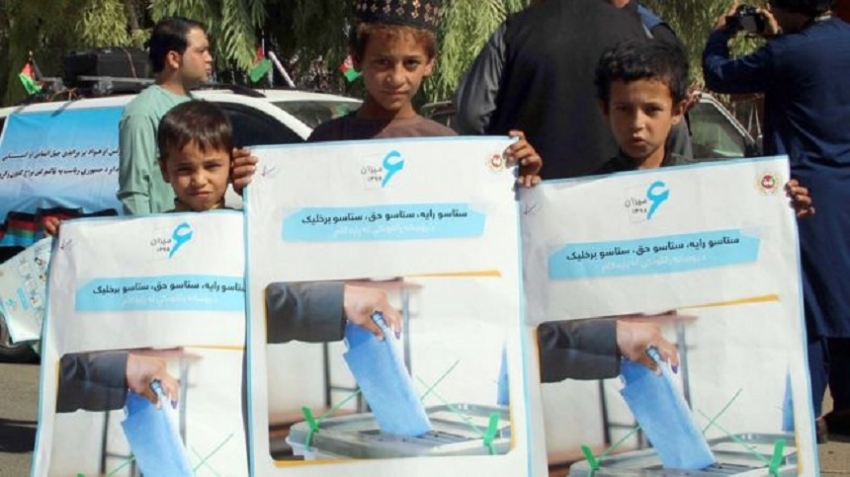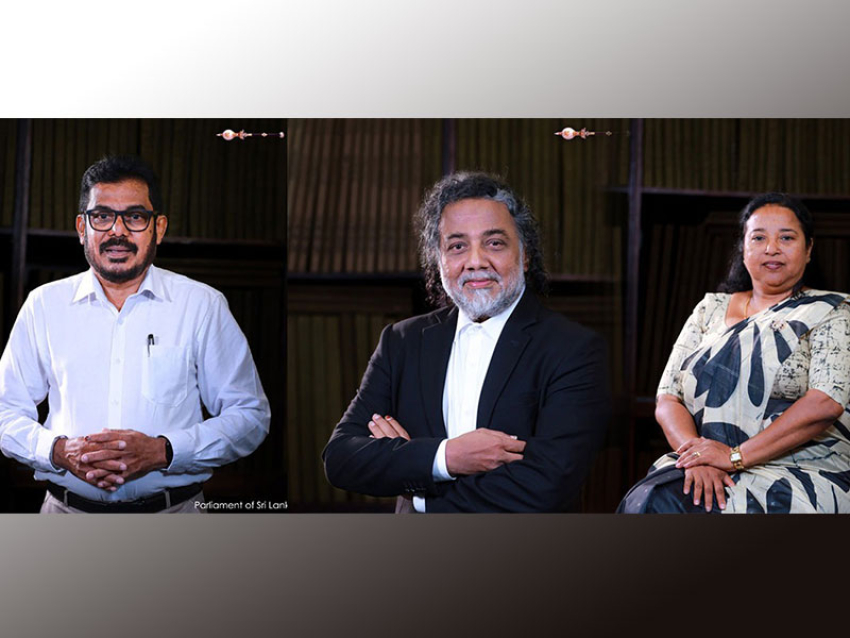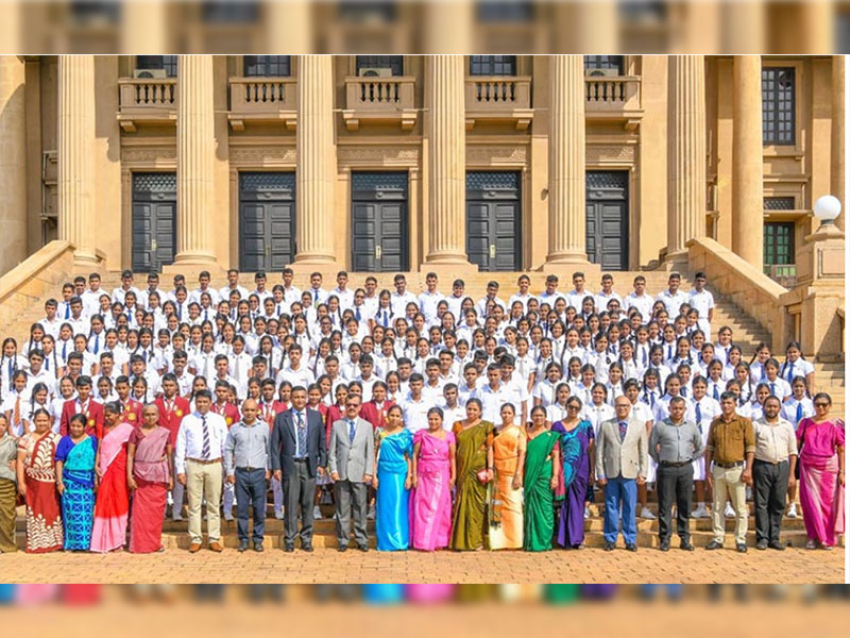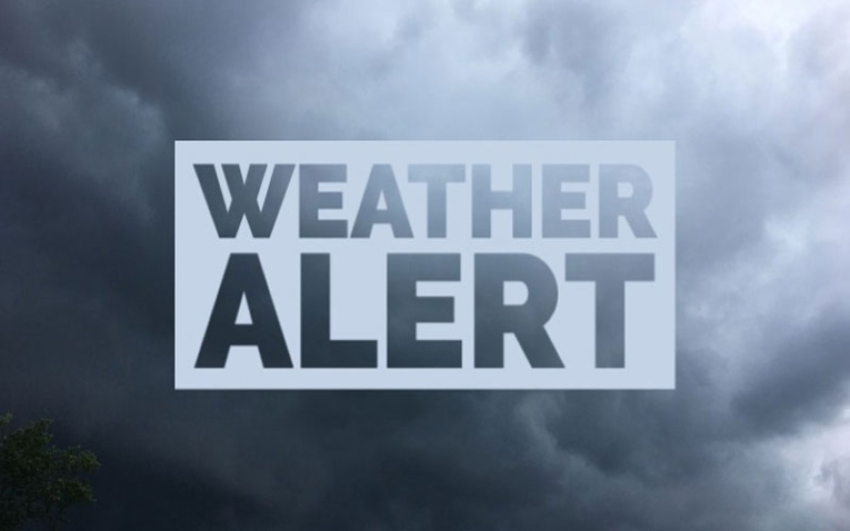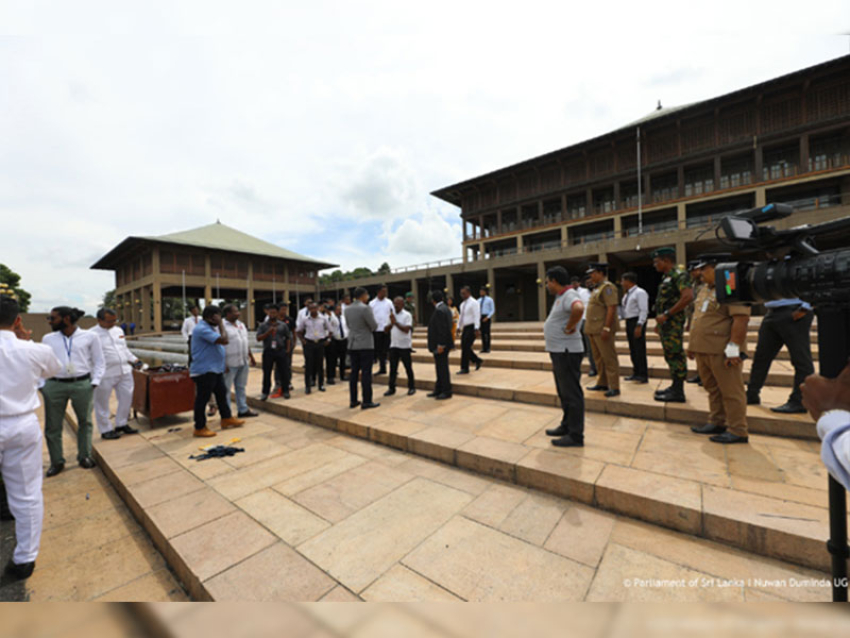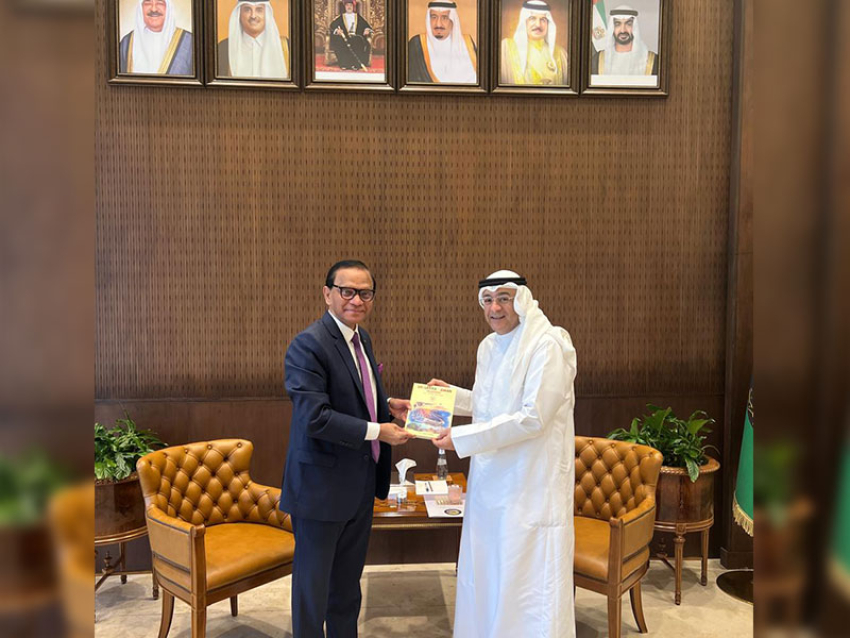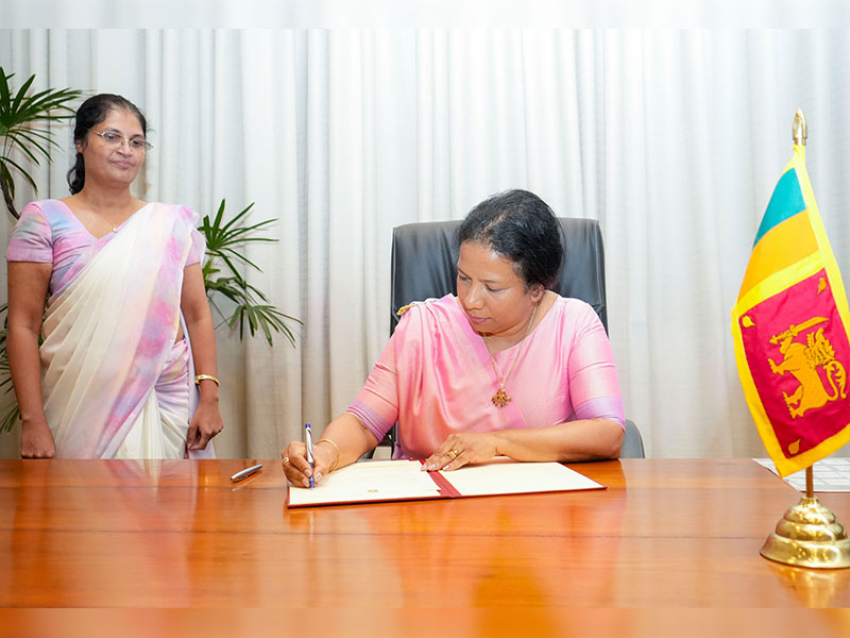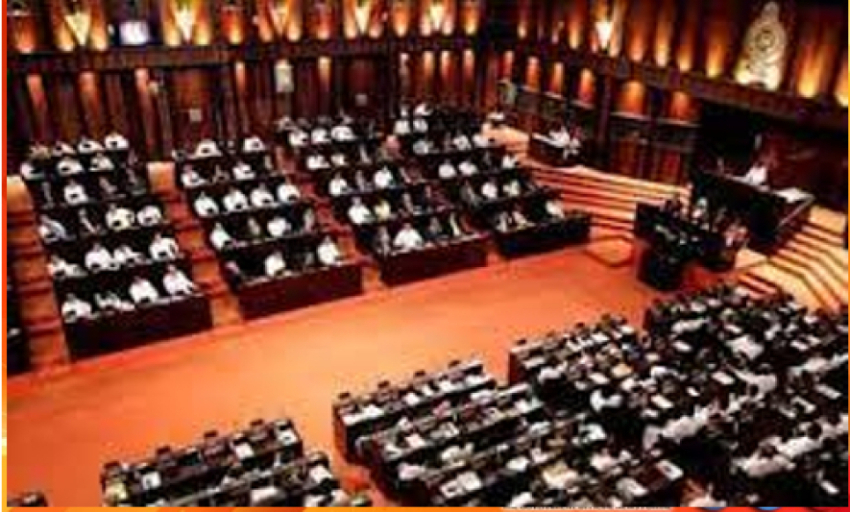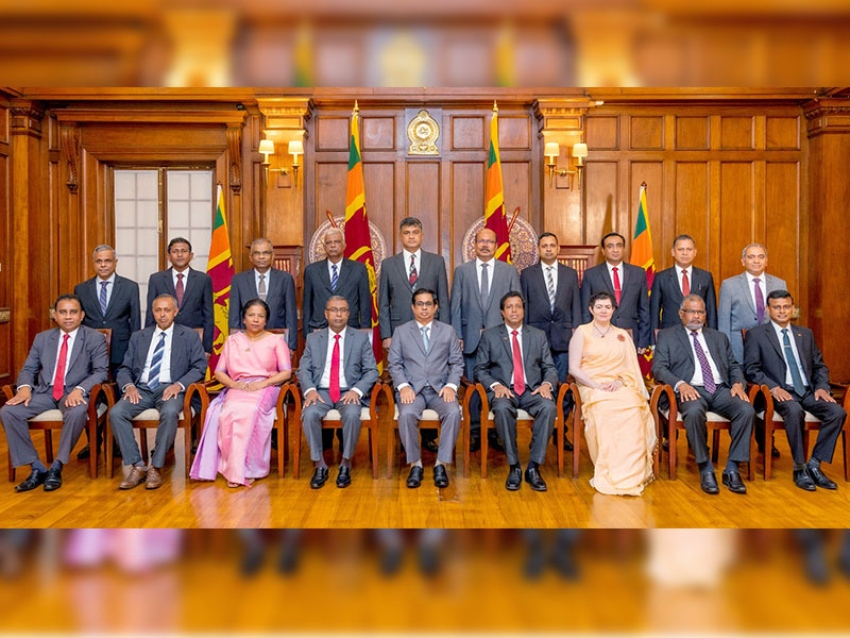Tens of thousands of Afghan forces have been deployed across the country to counter Taliban militants who have vowed to target polling stations.The twice-delayed vote is taking place after Taliban-US peace talks collapsed earlier this month.The two main candidates are the incumbent, Ashraf Ghani, and chief executive, Abdullah Abdullah.They have shared power since 2014.Shortly after voting began, there was an explosion near a polling station in the southern city of Kandahar. Reports say a number of people were injured.Independent Election Commission spokesman Zabi Sadaat told AFP: "Voting has begun all over the country, and we are glad the people are already in big lines at polling centres waiting to cast their votes."
Why does this election matter?Afghanistan's next president will lead a country devastated by four decades of war.The conflict continues to kill thousands of people every year, drawing in forces from around the world.
Nearly two decades since the international community intervened, the US has been trying to negotiate an end to the conflict with the Taliban. The US currently has about 14,000 troops in Afghanistan, and there are thousands more from countries like the UK, Germany and Italy, there as part of a Nato mission to train, advise and assist the country's security forces.That should mean whoever is elected president in the fourth election since US-led troops ousted the Taliban in 2001 has a key role to play at a crucial moment in the country's history.
However, the Taliban currently refuse to negotiate directly with the Afghan government, saying it is illegitimate.What's more, the militant group has said it will only begin negotiations with Afghan authorities after a deal with the US is agreed.So who sits at the head of Afghanistan's government may not be the US's primary concern - but it matters to the people caught in the crossfire between the army, the Taliban and other insurgents.BBC research found an average of 74 men, women and children died in the conflict every day during the month of August across Afghanistan. A fifth of those killed were civilians.According to the United Nations, more civilians were killed by Afghan and US forces in the first half of this year than by insurgents.Peace - and the new president's ability to negotiate it - will be top of most people's agenda.
What are the other issues?
Five years ago, the presidential election was mired by allegations of fraud and vote rigging. It took months to actually reach a result, with a deal between the two main contenders negotiated by the US ending in a "National Unity Government".Hopes are not high that things will be better this time.Afghanistan war: Tracking the killings in August 2019 Has the war cost America $500bn? Out of a population of about 37 million, fewer than 10 million are registered to vote - and even fewer are expected to cast a ballot. A poll carried out by the Transparent Election Foundation of Afghanistan found more than half of respondents were not planning to vote.This is in part due to threats of violence from the Taliban, who have said they will attack polling booths and have already targeted election rallies.There are also large areas of the country under Taliban control, where the Kabul government has little to no power, and voting is all but impossible.But a perceived lack of enthusiasm among voters is also attributed to a feeling things may not change for the better - not helped by the fact the same two men who fought for months over the top job in 2014 are the front-runners once again.Both have been accused of corruption while in office. Meanwhile, unemployment stands at about 25%, according to the UN, and almost 55% of Afghans are living below the poverty line.
Who are the contenders? Eighteen men - including former warlords, ex-spies and members of the country's former communist government - initially put themselves forward to fight the election, but five have dropped out. Not one woman is running for president, and only three women appear on the tickets of others.Results are due three weeks later. A second round, if needed, will be held in November.
Running an election in a war-torn country Almost 5,000 polling stations will be open on Saturday for people to cast their votes. Hundreds more were meant to open, but will remain closed on the day due for security reasons. A biometric voting system - based on fingerprints - will be used across the country to try to avoid fraud as people cast their ballots.Election officials revealed on the Friday before the election that just half the ballot boxes had reached the polling stations. They said they were confident all would have reached their destination by Saturday morning.
Why is there a war in Afghanistan? The short, medium and long story
President Trump has abruptly called off peace talks with the Afghan Taliban just as it appeared the insurgents and Washington were on the cusp of a deal.But why is the US fighting a war in Afghanistan and why has it lasted so long?On 11 September 2001, attacks in America killed nearly 3,000 people. Osama Bin Laden, the head of Islamist terror group al-Qaeda, was quickly identified as the man responsible.The Taliban, radical Islamists who ran Afghanistan and protected Bin Laden, refused to hand him over. So, a month after 9/11, the US launched air strikes against Afghanistan.As other countries joined the war, the Taliban were quickly removed from power. But they didn't just disappear - their influence grew back and they dug in.Since then, the US and its allies have struggled to stop Afghanistan's government collapsing, and to end deadly attacks by the Taliban."We did not ask for this mission, but we will fulfil it," US President George W Bush said when he announced the first air strikes against Afghanistan on 7 October, 2001. The raids were in response to the 9/11 attacks, which killed 2,977 people in New York, Washington and Pennsylvania.The mission, he said, was "to disrupt the use of Afghanistan as a terrorist base of operations and to attack the military capability of the Taliban regime".The first targets were military sites belonging to the hardline Taliban group who ruled the country. Training camps for al-Qaeda, the terror group run by 9/11 plotter Osama Bin Laden, were also hit.But 18 years on, it's hard to argue the US mission has been fulfilled - the Taliban may play a part in ruling Afghanistan again if peace talks do eventually succeed.
The Taliban first took control of the capital Kabul in 1996, and ruled most of the country within two years. They followed a radical form of Islam and enforced punishments like public executions.Within two months of the US and its international and Afghan allies launching their attacks, the Taliban regime collapsed and its fighters melted away into Pakistan.A new US-backed government took over in 2004, but the Taliban still had a lot of support in areas around the Pakistani border, and made hundreds of millions of dollars a year from the drug trade, mining and taxes.As the Taliban carried out more and more suicide attacks, international forces working with Afghan troops struggled to counter the threat the re-energised group posed.
In 2014, at the end of what was the bloodiest year in Afghanistan since 2001, Nato's international forces - wary of staying in Afghanistan indefinitely - ended their combat mission, leaving it to the Afghan army to fight the Taliban.But that gave the Taliban momentum, as they seized territory and detonated bombs against government and civilian targets. Last year, the BBC found the Taliban was openly active across 70% of Afghanistan.
Where did the Taliban come from?Afghanistan had been in a state of almost constant war for 20 years even before the US invaded.In 1979, a year after a coup, the Soviet army invaded Afghanistan to support its communist government. It fought a resistance movement - known as the mujahideen - that was supported by the US, Pakistan, China and Saudi Arabia, among other countries.In 1989, Soviet troops withdrew but the civil war continued. In the chaos that followed, the Taliban (which means "students" in the Pashto language) sprang up.Media captionTens of thousands of Afghan soldiers have been killed and injured. This is their storyThey first rose to prominence in the border area of northern Pakistan and south-west Afghanistan in 1994. They promised to fight corruption and improve security and, at that time, many Afghans were tired of the excesses and infighting of the mujahideen during the civil war.
Who are the Taliban?What would peace in Afghanistan look like?It's thought the Taliban first appeared in religious schools, mostly funded by Saudi Arabia, which preached a hardline form of Islam.They enforced their own austere version of Sharia, or Islamic law, and introduced brutal punishments. Men were made to grow beards and women had to wear the all-covering burka.The Taliban banned television, music and cinema and disapproved of girls' education.And because the Taliban gave shelter to militants from the al-Qaeda group, it made them an immediate target for an attack by US, Afghan and international forces in the wake of 9/11.Why has the war lasted so long?There are many reasons for this. But they include a combination of fierce Taliban resistance, the limitations of Afghan forces and governance, and other countries' reluctance to keep their troops for longer in Afghanistan.At times over the past 18 years, the Taliban have been on the back foot. In late 2009, US President Barack Obama announced a troop "surge" that saw the number of American soldiers in Afghanistan top 100,000.The surge helped drive the Taliban out of parts of southern Afghanistan, but it was never destined to last for years.As a result, the Taliban were able to regroup. When international forces withdrew from fighting, Afghan forces left to lead the charge were easily overwhelmed. To make matters worse, Afghanistan's government, that is full of tribal division, is often hamstrung.
The BBC World Service's Dawood Azami says there are five main reasons the war is still going on now. They include:a lack of political clarity since the invasion began, and questions about the effectiveness of the US strategy over the past 18 years;the fact each side is trying to break what has become a stalemate - and that the Taliban have been trying maximise their leverage during peace negotiationsan increase in violence by Islamic State militants in Afghanistan - they've been behind some of the bloodiest attacks recentlyThere's also the role played by Afghanistan's neighbour, Pakistan.
There's no question the Taliban have their roots in Pakistan, and that they were able to regroup there during the US invasion. But Pakistan has denied helping or protecting them - even as the US demanded it do more to fight militants.How have the Taliban managed to stay so strong?
The group could be making as much as $1.5bn (£1.2bn) a year, a huge increase even within the past decade. Some of this is through drugs - Afghanistan is the world's largest opium producer, and most opium poppies - used for heroin - are grown in Taliban-held areas.But the Taliban also make money by taxing people who travel through their territory, and through businesses like telecommunications, electricity and minerals.Foreign countries, including Pakistan and Iran, have denied funding them, but private citizens from the region are thought to have done so.
How costly has the war been?It's difficult to say how many Afghan troops have died - the numbers are no longer published. But in January 2019, Afghan President Ashraf Ghani said 45,000 members of the security forces had been killed since 2014.Nearly 3,500 members of the international coalition forces have died since the 2001 invasion, more than 2,300 of them American.The figures for Afghan civilians are more difficult to quantify. A UN report in February 2019 said more than 32,000 civilians had died. The Watson Institute at Brown University says 42,000 opposition fighters have died.The same institute says conflicts in Iraq, Syria, Afghanistan and Pakistan have cost the US $5.9 trillion since 2001.The US is still conducting air strikes against the Taliban, instigated by the third president to oversee the war, Donald Trump. But he is keen to reduce troop numbers before he faces another election in November 2020.The Taliban now control much more territory than they did when international troops left Afghanistan in 2014.Many in Washington and elsewhere fear that a full US troop pull-out would leave a vacuum that could be filled by militant groups seeking to plot attacks in the West.The Afghan people, meanwhile, continue to bear the brunt of the long and bloody conflict.
Who are the Taliban?The hardline Islamic Taliban movement has proved to be a formidable fighting force in Afghanistan and a major threat to its government.The Taliban have also threatened to destabilise Pakistan, where they have controlled areas in the north-west in recent years. Despite a major military offensive against them since 2014, they continue to mount frequent suicide bombings and other attacks across the country.Many observers now believe that future peace in Afghanistan can only come if the government in Kabul negotiates with the Taliban.The announcement of Taliban plans to open an office in Qatar in June 2013 was seen as a positive step in those negotiations, but mistrust on both sides remains high.Despite this, talks between the Taliban and Afghan government officials took place for the first time in July 2015.Those talks came a month after a group of Afghan women met Taliban representatives in Oslo. Further contacts with the group have failed to make progress.In September 2015, the Afghan Taliban said they had put aside weeks of infighting and rallied around a new leader in the form of Mullah Mansour, who had been the deputy of longstanding leader Mullah Omar.The previous month the Taliban admitted they had covered up Mullah Omar's death for more than two years.Mullah Mansour was killed in a US drone strike in May 2016 and replaced by his deputy Mawlawi Hibatullah Akhundzada, a hardline religious scholar.Austere ruleThe Taliban emerged in the early 1990s in northern Pakistan following the withdrawal of Soviet troops from Afghanistan.
The Taliban have launched a series of deadly attacks in Kabul - including one on the Afghan parliament in June 2015A predominantly Pashtun movement, the Taliban came to prominence in Afghanistan in the autumn of 1994.It is commonly believed that they first appeared in religious seminaries - mostly paid for by money from Saudi Arabia - which preached a hard line form of Sunni Islam.The Taliban's promise - in Pashtun areas straddling Pakistan and Afghanistan - was to restore peace and security and enforce their own austere version of Sharia, or Islamic law, once in power.
In both countries they introduced or supported Islamic punishments - such as public executions of convicted murderers and adulterers and amputations of those found guilty of theft.Men were required to grow beards and women had to wear the all-covering burka.The Taliban banned television, music and cinema and disapproved of girls aged 10 and over from going to school.
But there is little doubt that many Afghans who initially joined the movement were educated in madrassas (religious schools) in Pakistan.Pakistan was also one of only three countries, along with Saudi Arabia and the United Arab Emirates (UAE), which recognised the Taliban when they were in power in Afghanistan from the mid-1990s until 2001.It was also the last country to break diplomatic ties with the Taliban.Although Pakistan has in recent years adopted a harder line against Taliban militants carrying out attacks on its soil, Prime Minister Nawaz Sharif - who was elected in May 2013 - has said talking to the militants is one of his priorities.At least three key leaders of the Pakistani Taliban were killed in US drone strikes in 2013. Mullah Nazir was killed in January and Waliur Rehman was killed in May.Media captionThe BBC's John Simpson has this assessment of the different Taliban groupsIn November 2013, the group's leader in Pakistan, Hakimullah Mehsud, was killed in a drone strike.But despite these setbacks for the militants, there is evidence that their influence in Karachi has significantly increased.What is arguably one of the most internationally criticised of all Pakistani Taliban attacks took place in October 2012, when schoolgirl Malala Yousafzai was attacked on her way home in the town of Mingora.
Al-Qaeda 'sanctuary'The attention of the world was drawn to the Taliban in Afghanistan following the attacks on the World Trade Centre in September 2001.Pakistani Taliban leader Hakimullah Mehsud was killed in a US drone strike in 2013The Taliban in Afghanistan were accused of providing a sanctuary to Osama Bin Laden and the al-Qaeda movement who were blamed for the attacks.Soon after 9/11 the Taliban were driven from power in Afghanistan by a US-led coalition, although their leader Mullah Mohammad Omar was not captured.In recent years the Taliban re-emerged in Afghanistan and grew far stronger in Pakistan, where observers say there is loose co-ordination between different Taliban factions and militant groups.The main Pakistani faction was led by Hakimullah Mehsud until his death. His Tehrik-e Taliban Pakistan (TTP) is blamed for dozens of suicide bombings and other attacks.Observers warn against over-stating the existence of one unified insurgency against the Pakistani state, however.
For years the Taliban in Afghanistan were led by Mullah Omar, a village clergyman who lost his right eye fighting the occupying forces of the Soviet Union in the 1980s.Afghans, weary of the mujahideen's excesses and infighting after the Soviets were driven out, generally welcomed the Taliban when they first appeared on the scene.Their early popularity was largely due to their success in stamping out corruption, curbing lawlessness and making the roads and the areas under their control safe for commerce to flourish.
Exactly one year later, they captured the Afghan capital, Kabul, after overthrowing the regime of President Burhanuddin Rabbani and his defence minister, Ahmed Shah Masood.By 1998, they were in control of almost 90% of Afghanistan.They were accused of various human rights and cultural abuses. One notorious example was in 2001, when the Taliban went ahead with the destruction of the famous Bamiyan Buddha statues in central Afghanistan, despite international outrage.On October 7, 2001, a US-led military coalition invaded Afghanistan and by the first week of December the Taliban regime had collapsed.Mullah Omar and his comrades evaded capture despite one of the largest manhunts in the world.Many senior Taliban leaders take refuge in the Pakistani city of Quetta, from where they guide the Taliban, analysts say.But the existence of what is dubbed the "Quetta Shura" is denied by Islamabad, even though there is much evidence to the contrary.Despite ever higher numbers of foreign troops, the Taliban have steadily extended their influence, rendering vast tracts of Afghanistan insecure, and violence in the country has returned to levels not seen since 2001.
Their retreat in the years after 2001 enabled them to limit their human and material losses and return with a vengeance.There have been numerous Taliban attacks on Kabul in recent years and, in September 2012, the group carried out a high-profile raid on Nato's Camp Bastion base.In the same month the US military handed control of the controversial Bagram prison - housing more than 3,000 Taliban fighters and terrorism suspects - to the Afghan authorities.In September 2015 the Taliban seized control of a provincial capital for the first time since their defeat in 2001, taking control of the strategically important city of Kunduz.The US is keeping close to 10,000 troops in Afghanistan, but the Taliban finds itself an increasingly splintered organisation - that is also threatened by the rise of the so-called Islamic State militant group in Afghanistan.

